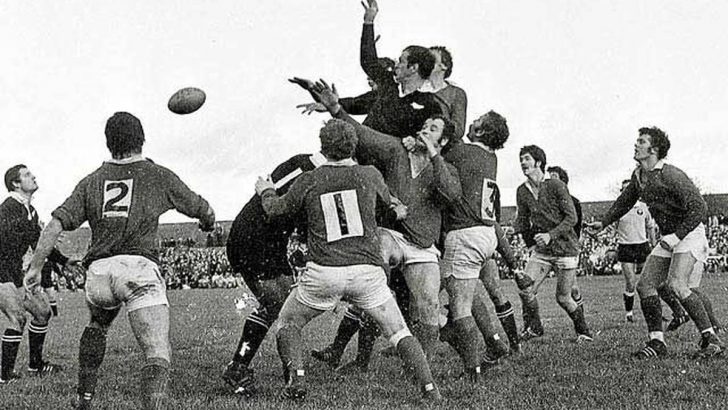Stand Up and Fight: When Munster Beat the All Blacks
by Alan English (Yellow Jersey Press, €14.00 / £9.99)
Presently the Irish team is enjoying first place in the pecking-order of world rugby. This has not resulted from a meteoric rise from rags to riches. For decades rugby has been played in Ireland to a high standard.
To find the source of last month’s victory, when Ireland defeated the All Blacks in Europe for the first time since 2012, we need look no further than the victory of Munster over the much-vaunted All Blacks in 1978, recounted here in a 40th anniversary edition of a famous book.
Between October 10 and December 16, 1978, that touring All Blacks team played 18 matches, including internationals against England, Ireland, Scotland and Wales. They won every one of those games, except one – against Munster at Thomond Park, Limerick, on October 31, 1978.
Alan English provides a blow-for-blow account of the game and pen pictures of the players on both sides who played in it and describes the crucial role of Tom Kiernan, manager of the Munster team, in crafting the historic victory.
Rugby was introduced into Ireland more than 140 years ago. It was part of the British colonial cultural outreach. Rugby and soccer clubs and leagues were established in the garrison towns across the country. British army and navy personnel were mainly involved in those early clubs and leagues.
Apart from members of the armed forces, rugby was the preserve of the middle-class, soccer that of the working-class. However, as Mr English notes, from the outset the natives of Limerick adopted rugby as their own and its fans have always been drawn from all sections of the community in the city.
The author does not eschew ‘rugby’s elephant in the room’ – the appalling rate of injuries, some devastating, suffered by those who play it. The consequences of these injuries can persist for many years even when players have ceased playing the game.
Just a few of those who featured in the celebrated match in Thomond Park escaped without injuries from their playing days. The author catalogues those injuries.
The two Kerrymen who starred in the historic win in Thomond Park have been ‘up front’ about the consequences of their playing rugby.
Retirement
Moss Keane in his autobiography musing about his retirement wrote: “My shoulders were shagged; my lower back was crocked; I also had a lot of knee trouble. I had only 70 percent rotation in my neck…and the many stories of terrible rugby injuries troubled me!” Donal Spring’s rugby career was cut very short by a severe back injury which bedevilled him for the rest of his life.
Camaraderie and solidarity are qualities found in all good teams. There was no short supply of it in Thomond Park on that fateful day. It persisted for decades among those Munster players and even between their respective families.
In the more than 100 interviews conducted with players, fans and citizens of Limerick, Mr English brilliantly captures the atmosphere surrounding the match.
He also provides a fascinating socio-economic cameo of the Limerick of that time.
English adds two valuable appendices, ‘Record of the legendary Eight All Blacks Tour 1978’ and ‘Munster’s’ Record against Overseas Teams 1905-78’.
The latter includes a comprehensive list of those who represented Munster on all those occasions.
The preliminary pages include comments from a score of well-known sports journalists in Britain and Ireland praising Mr English’s account of Munster’s heroics in Thomond Park.
His book has rightly been called a classic of sports writing. And so it is, one just right for Christmas.


